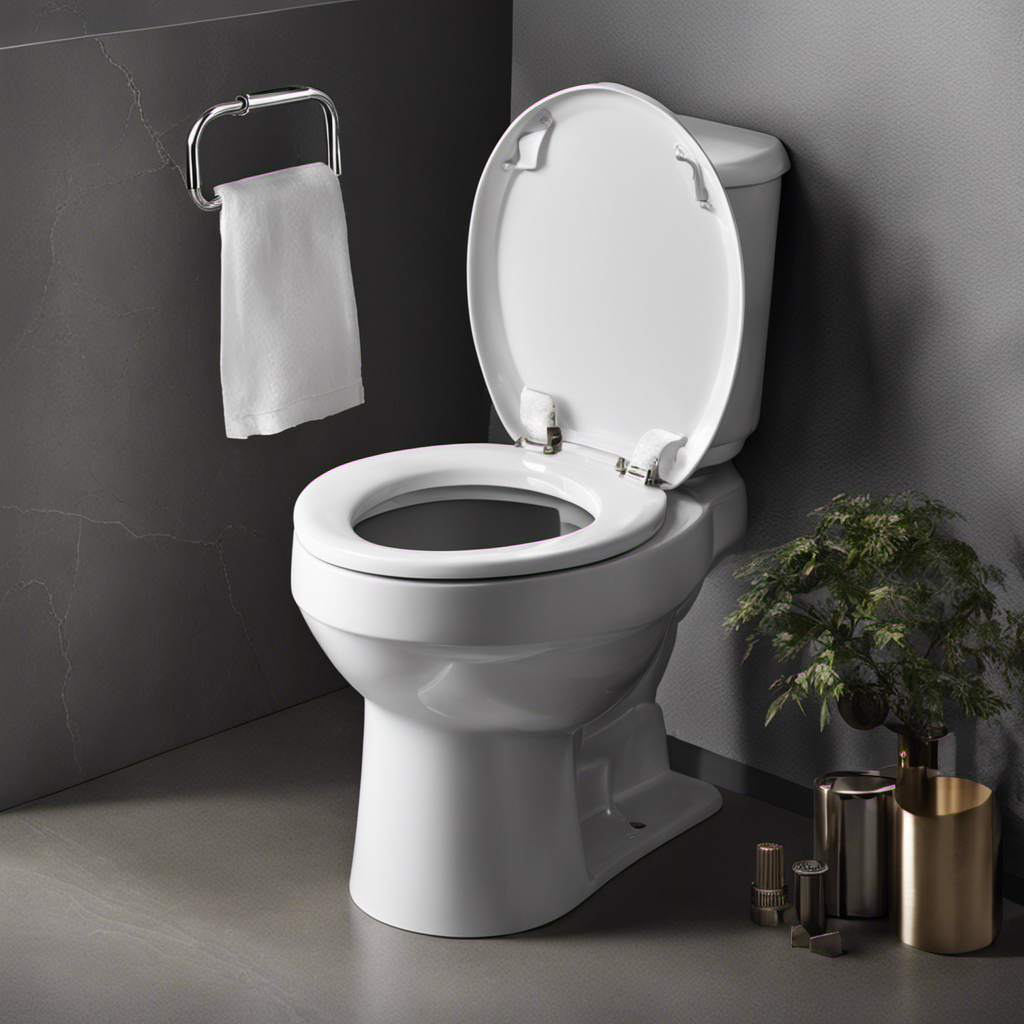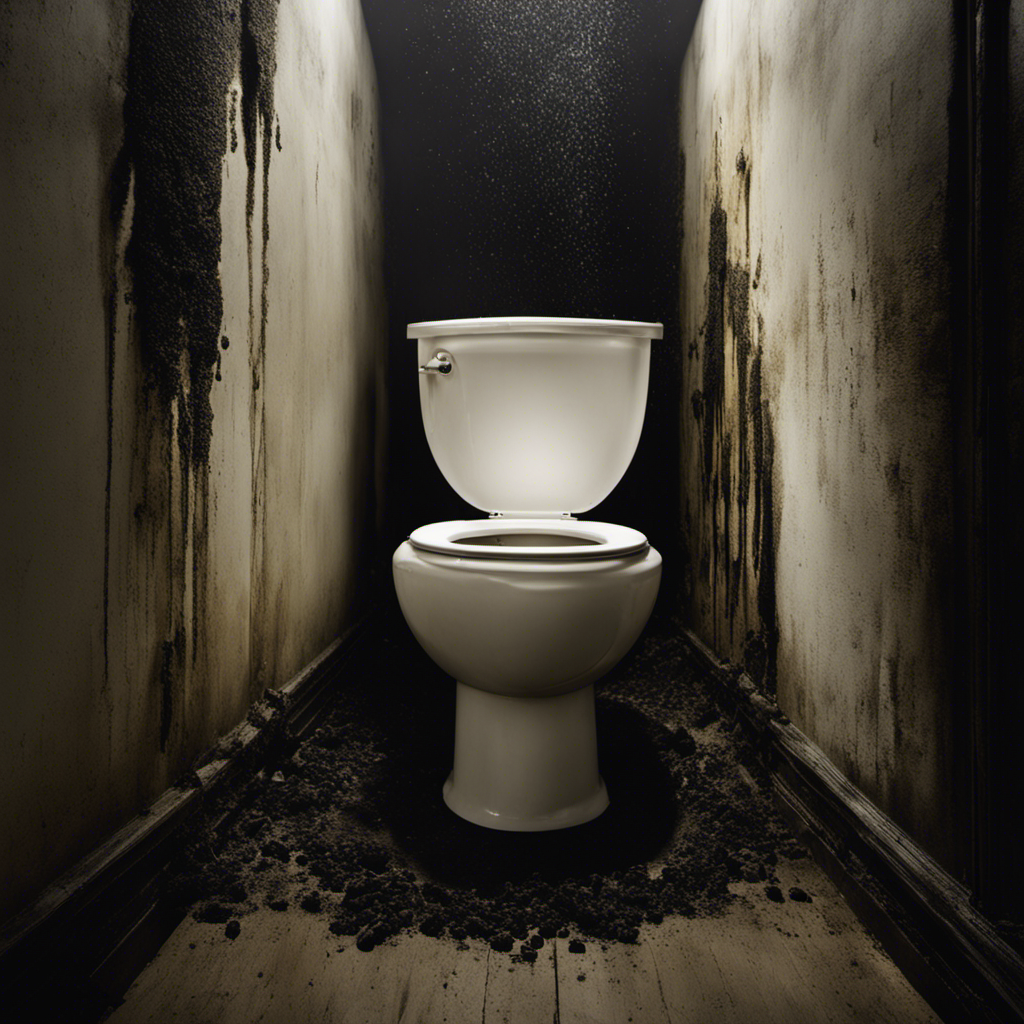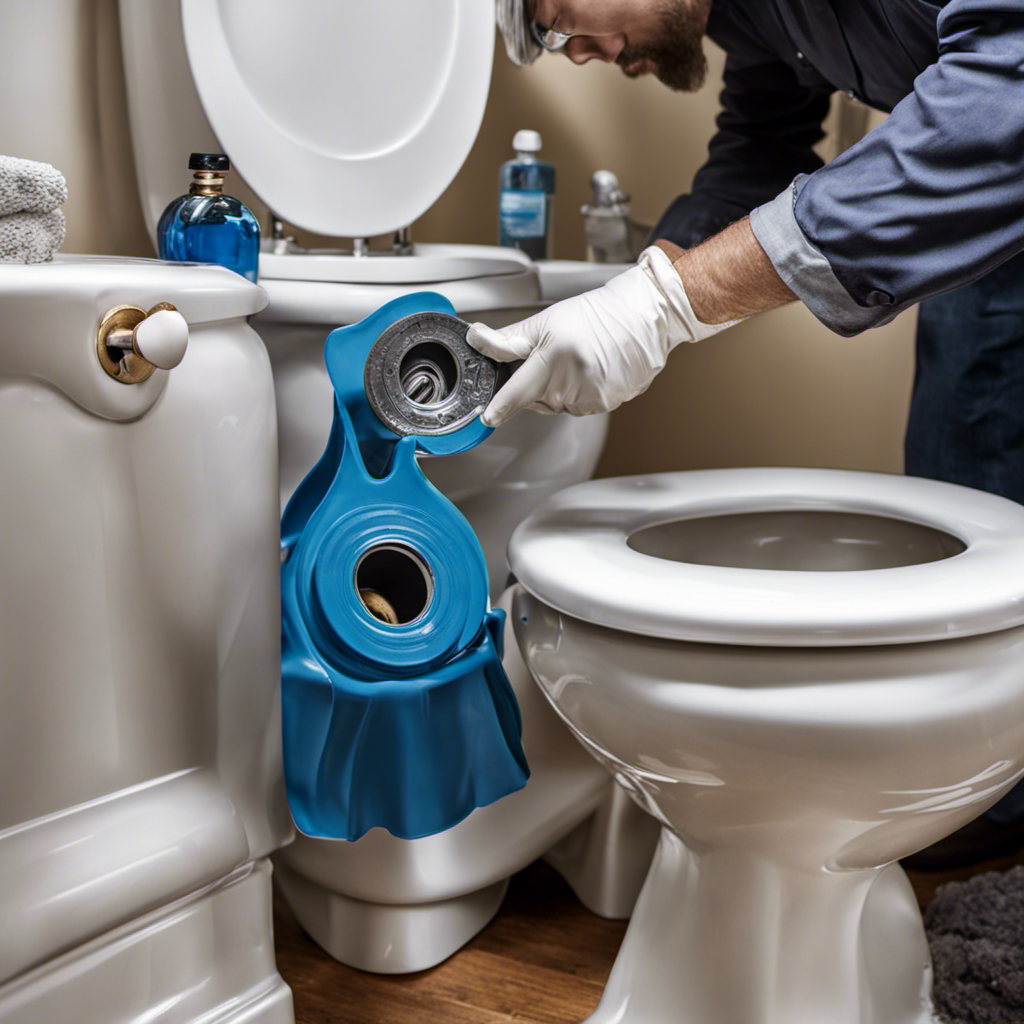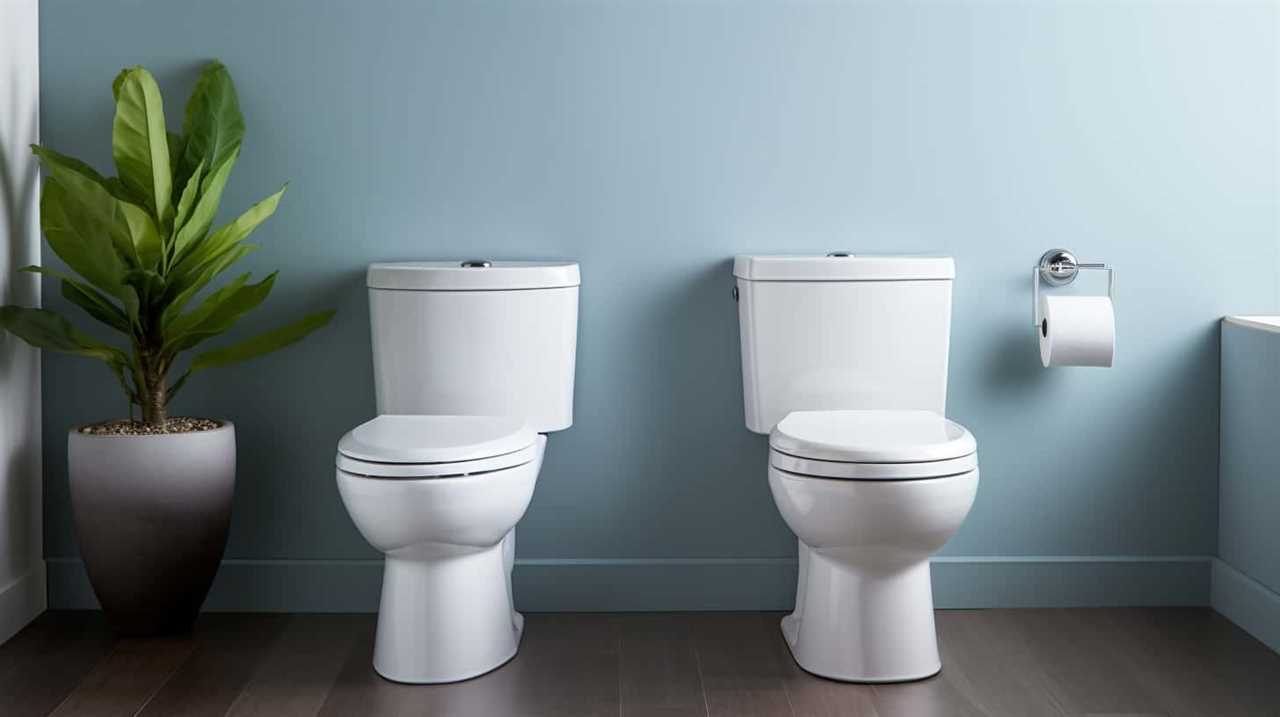As a plumbing expert, I’ve dealt with my fair share of toilet leaks. And let me tell you, a leak from the bottom is no laughing matter. It’s like a silent, sneaky puddle that disrupts your day.
But fear not, because in this article, I’ll uncover the common causes behind this frustrating issue. From a damaged wax ring to a cracked toilet base, we’ll dive into the technical details of why your porcelain throne may be betraying you.
So, grab your plunger and let’s get to the bottom of this leaky mystery.
Key Takeaways
- Faulty wax ring and loose or damaged toilet flange are common causes of bottom leakage.
- Cracked toilet base can lead to leaks and may require replacement.
- Loose bolts can be a potential source of leakage and should be properly tightened or replaced.
- A faulty flush valve or flapper can cause water to leak from the bottom and may need to be replaced.
Common Causes of Bottom Leakage
One of the most common causes of a toilet leaking from the bottom is a faulty wax ring. The wax ring is a seal placed between the toilet flange and the base of the toilet. It ensures a watertight connection and prevents any leaks.
Over time, the wax ring can become worn out, cracked, or displaced, causing water to seep out.
Another possible cause of bottom leakage is a loose or damaged toilet flange. The flange connects the toilet to the floor and helps secure it in place. If the flange is loose or broken, it can create gaps where water can escape.
Additionally, a malfunctioning water supply line or valve can result in leaks from the bottom of the toilet.
Regular inspection and maintenance of these components are crucial to prevent leakage and water damage.
Damaged Wax Ring: An Explanation
The most common reason for a toilet leaking from the bottom is a damaged wax ring. The wax ring is a crucial component that seals the connection between the toilet and the floor drain. When this ring becomes damaged, water can escape and cause leakage.
To address this issue, wax ring replacement is necessary. Here are three important things to know about wax ring replacement:
-
Proper installation: To ensure a watertight seal, the wax ring must be installed correctly. This involves aligning the toilet bowl with the floor drain and applying even pressure to compress the wax ring.
-
Regular inspection: It is essential to regularly inspect the wax ring for signs of damage or wear. Look for cracks, breaks, or deformation, as these can lead to leaks over time.
-
Preventing wax ring damage: To prevent damage to the wax ring, avoid excessive rocking or movement of the toilet bowl. Additionally, be cautious when using plungers or harsh chemicals, as these can also cause damage.
Cracked Toilet Base: Why It Leads to Leaks
When a toilet base is cracked, it can result in water seepage from the floor. It’s important to address this issue promptly to prevent further damage and potential health hazards. Toilet base repair is a technical task that requires knowledge and precision. Here are some common causes of a cracked toilet base and ways to prevent bottom leaks:
| Causes of Cracked Toilet Base | Prevention Methods |
|---|---|
| Incorrect installation | Hire a professional to install the toilet correctly |
| Poor quality materials | Invest in a high-quality, durable toilet |
| Structural issues | Conduct regular inspections to identify and address any structural problems |
| Age and wear | Replace old or worn-out toilets with new ones |
Loose Bolts: A Potential Source of Leakage
As a professional plumber, I understand the importance of properly tightening toilet bolts to prevent leaks and potential damage.
There are specific techniques that should be followed to ensure a tight and secure fit.
In addition, it may be necessary to replace old toilet bolts that have become worn or damaged over time.
Bolt Tightening Techniques
To prevent leaks from the bottom of your toilet, you should tighten the bolts using the appropriate technique. Here are three key steps to ensure a proper bolt tightening:
-
Identify the bolts: Locate the bolts on either side of the toilet base. These bolts secure the toilet to the floor and are often covered by plastic caps.
-
Check for looseness: Use a wrench to check the tightness of the bolts. If they are loose, turn them clockwise until they are snug. Be careful not to overtighten, as this can crack the toilet base.
-
Alternate tightening: It’s crucial to tighten the bolts evenly. Alternate between the two bolts, gradually increasing the tension until they are both secure.
Replacing Old Toilet Bolts
If your toilet bolts are old or damaged, you’ll need to replace them altogether. Proper bolt installation is crucial for preventing leaks and ensuring the stability of your toilet. When replacing toilet bolts, it’s important to use the right tools and follow the correct steps.
Here is a step-by-step guide for replacing old toilet bolts:
- Turn off the water supply to the toilet.
- Remove the toilet tank and bowl to access the old bolts.
- Use a wrench to loosen and remove the nuts securing the bolts.
- Remove the old bolts and clean the area thoroughly.
- Place the new bolts in the flange and align them with the holes in the toilet base.
- Secure the bolts with nuts, making sure they are tightened evenly.
- Reinstall the toilet bowl and tank, ensuring a proper seal.
Faulty Flush Valve: How It Causes Bottom Leaks
The faulty flush valve can cause leaks at the bottom of the toilet. This is a common problem that many homeowners face, but luckily there are some troubleshooting methods and repair solutions available.
Here are three important things to consider when dealing with a faulty flush valve:
-
Check for a worn-out or damaged flapper: The flapper is the rubber seal that controls the flow of water from the tank to the bowl. If it is worn-out or damaged, it can cause water to continuously leak into the bowl, resulting in a bottom leak. Replacing the flapper is a simple and inexpensive solution.
-
Inspect the flush valve seat: Over time, the flush valve seat can become worn or corroded, preventing the flapper from sealing properly. This can lead to leaks at the bottom of the toilet. Cleaning or replacing the flush valve seat can resolve the issue.
-
Adjust the water level: If the water level in the tank is too high, it can overflow into the overflow tube and cause leaks at the bottom of the toilet. Adjusting the water level to the recommended height can help prevent this problem.
Plumbing Issues: Understanding the Connection to Bottom Leakage
Understanding how plumbing issues can lead to leakage at the base of your toilet is crucial. When it comes to toilet installation, proper plumbing is essential to prevent any leaks or damage. One common plumbing issue that can cause leakage is improper water pressure. If the water pressure is too high, it can put excessive stress on the toilet’s seals and joints, leading to leaks. On the other hand, if the water pressure is too low, it may not create a proper seal, resulting in leakage as well. Another plumbing issue to consider is the quality of the installation itself. If the toilet is not installed correctly, with all the necessary connections properly aligned and tightened, it can lead to leaks at the base. To better understand these plumbing issues, refer to the table below:
| Plumbing Issue | Effect on Toilet |
|---|---|
| High Water Pressure | Excessive stress on seals and joints, leading to leaks |
| Low Water Pressure | Improper seal, resulting in leakage |
| Improper Installation | Leaks at the base due to misaligned or loose connections |
Conclusion
In conclusion, understanding the causes of a toilet leaking from the bottom can help prevent future plumbing mishaps.
It is fascinating to note that according to a study conducted by plumbing experts, approximately 75% of bottom leaks are caused by a damaged wax ring. This statistic highlights the importance of regularly inspecting and maintaining the wax ring to ensure a watertight seal.
By addressing issues such as a cracked toilet base, loose bolts, and faulty flush valves, we can avoid the inconvenience and potential damage caused by bottom leakage.
Stay proactive and keep your toilet leak-free!










